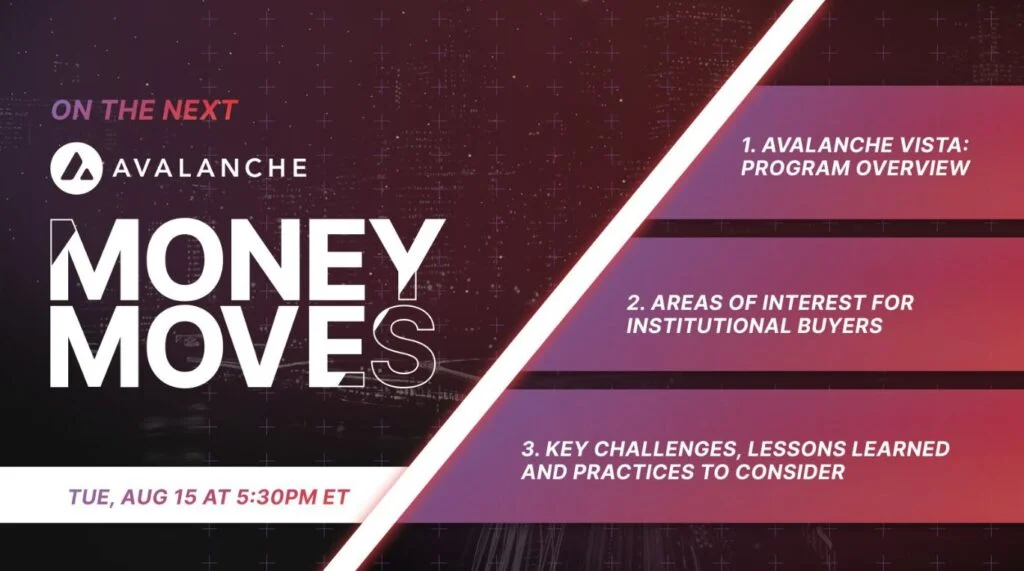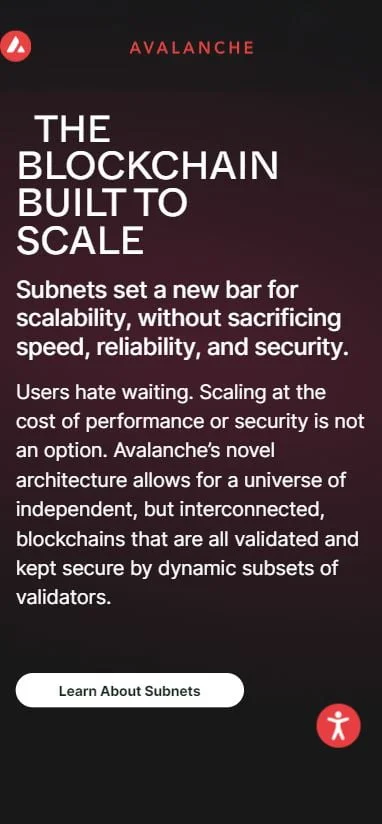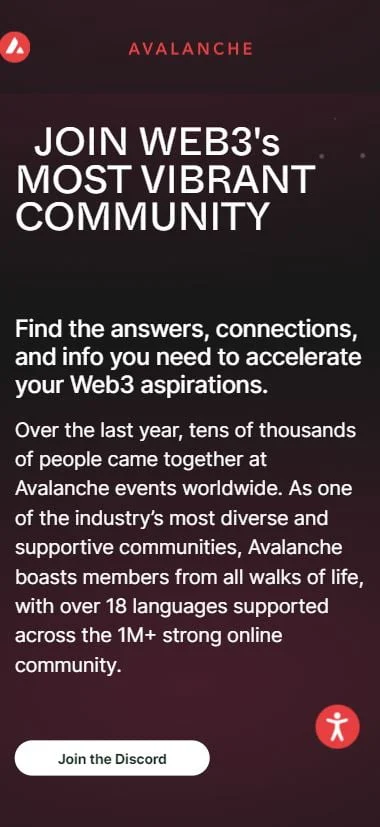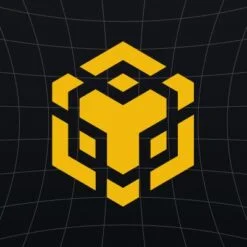About Avalanche (AVAX)

Key Features of Avalanche (AVAX)
- High Throughput and Low Latency:
- Avalanche is built to support high transaction throughput and achieve near-instant finality. It can handle thousands of transactions per second, which is far more scalable than earlier blockchains like Bitcoin and Ethereum.
- The platform can confirm transactions in less than one second, offering significantly faster transaction finality compared to Ethereum’s average 15-second block time.
- Unique Consensus Mechanism (Avalanche Consensus):
- Avalanche uses a novel consensus mechanism known as Avalanche consensus, which is a variation of directed acyclic graph (DAG) technology. This consensus protocol allows for high scalability and low latency by enabling transactions to be validated asynchronously by a decentralized group of validators.
- The Avalanche consensus provides strong security guarantees, enabling the network to process high volumes of transactions without compromising decentralization or speed.
- The protocol is designed to be resistant to centralization attacks, ensuring that the network remains decentralized and secure.
- Subnetworks (Subnets):
- One of the standout features of Avalanche is its subnet architecture. A subnet is a customizable network of validators that can run its own blockchain with specific rules and use cases. Subnets enable project-specific blockchains that are still part of the Avalanche ecosystem but have distinct governance, security, and tokenomics from the main Avalanche network.
- Subnets allow developers to deploy blockchain applications with customizable consensus and governance rules, giving them full flexibility to tailor their networks to specific needs. This makes Avalanche an attractive option for enterprise-level applications that require specialized configurations.
- Three Core Chains:
- Avalanche consists of three interconnected chains that help achieve speed, scalability, and flexibility:
- X-Chain (Exchange Chain): The X-Chain is responsible for asset creation and transactions. It uses the Avalanche consensus and is optimized for high throughput. It is used for the transfer and management of assets (such as AVAX tokens or custom assets) on the network.
- C-Chain (Contract Chain): The C-Chain is where smart contracts are executed, and it is fully compatible with Ethereum’s tooling, such as MetaMask, Web3.js, and Truffle. It uses the Avalanche consensus protocol but implements the Ethereum Virtual Machine (EVM), which allows Ethereum-based dApps to be deployed on Avalanche with minimal changes.
- P-Chain (Platform Chain): The P-Chain coordinates validators and manages subnets. It is responsible for staking, validator management, and subnet creation. This chain handles the management of network validators and coordinates activities across Avalanche’s entire ecosystem.
- Avalanche consists of three interconnected chains that help achieve speed, scalability, and flexibility:
- Scalability through Parallel Processing:
- Avalanche uses parallel processing across its three chains to improve scalability. Each chain can process different types of transactions or smart contracts simultaneously, without bottlenecking the network. This allows Avalanche to achieve horizontal scalability, meaning the network can increase its capacity by adding new subnets, validators, and assets without sacrificing performance.
- In practice, Avalanche can handle a much larger volume of transactions per second (TPS) than Ethereum, making it an ideal choice for high-demand applications in areas such as DeFi, gaming, and enterprise blockchain solutions.
- Native Token (AVAX):
- The native token of the Avalanche network is AVAX, which is used for several key functions:
- Transaction Fees: AVAX is used to pay for transaction fees on the network, including fees on the X-Chain and C-Chain.
- Staking: AVAX is used to secure the network by staking tokens with validators on the P-Chain. Validators earn rewards for confirming transactions and participating in the consensus mechanism.
- Governance: AVAX holders can participate in network governance, voting on proposals and changes to the protocol. This decentralized governance model ensures that the community has a say in the development of the network.
- The native token of the Avalanche network is AVAX, which is used for several key functions:
- Interoperability:
- Avalanche aims to be an interoperable platform that can interact with other blockchain networks. This includes Ethereum and Bitcoin, as well as other enterprise blockchains and dApp ecosystems.
- Through its C-Chain, Avalanche is compatible with Ethereum’s smart contracts, which means developers can port their Ethereum-based dApps over to Avalanche with minimal effort, leveraging Avalanche’s speed and scalability.

Benefits of Avalanche
- Speed and Low Fees:
- Avalanche offers sub-second transaction finality and high throughput with very low transaction fees, making it an attractive choice for developers and users who need high-speed, low-cost transactions. Its network can handle thousands of transactions per second (TPS), which is much faster than traditional blockchains like Bitcoin and Ethereum.
- Scalability:
- Avalanche’s subnet model enables horizontal scalability, which means the network can easily expand without overloading any single chain. By creating new subnets to handle increasing demand, Avalanche can scale effectively as the ecosystem grows.
- Customizable Blockchains:
- With the ability to create subnets and custom blockchains, developers can tailor consensus rules, governance, and features to their specific needs. This flexibility makes Avalanche an appealing platform for both enterprise use cases and decentralized applications.
- Energy Efficient:
- Avalanche uses a proof-of-stake (PoS) consensus mechanism, which is much more energy-efficient than proof-of-work (PoW) mechanisms like Bitcoin. Validators on the network stake AVAX tokens to participate in the consensus process, and staking rewards are distributed to participants for securing the network.
- EVM Compatibility:
- Avalanche’s C-Chain is fully compatible with the Ethereum Virtual Machine (EVM), allowing developers to deploy existing Ethereum-based dApps to the Avalanche network with minimal adjustments. This also means that Ethereum-based assets (like ERC-20 tokens) can be easily transferred to Avalanche, providing a bridge between Ethereum and Avalanche ecosystems.
Use Cases of Avalanche
- DeFi (Decentralized Finance):
- Avalanche has become a hub for DeFi applications due to its high transaction throughput, low fees, and EVM compatibility. Platforms like Aave, Trader Joe, Pangolin, and Benqi are deployed on Avalanche, offering services like lending, borrowing, yield farming, and trading.
- Enterprise Blockchain Solutions:
- Avalanche’s subnet architecture makes it ideal for enterprise blockchain solutions where businesses can create customized blockchains with tailored governance, consensus, and security features. It is suitable for use cases in finance, supply chain management, and more.
- NFTs and Gaming:
- The high-speed nature of Avalanche makes it suitable for NFT marketplaces and blockchain-based gaming platforms, where quick transaction finality and low fees are important for enhancing user experience.
- Cross-Chain Interoperability:
- Avalanche’s support for cross-chain interoperability opens the door to decentralized applications that can work across multiple blockchain networks, leveraging the best features of each blockchain for different use cases. This is especially valuable for the rapidly growing DeFi ecosystem.
AVAX Tokenomics
- Total Supply: The total supply of AVAX is 720 million tokens.
- Staking Rewards: AVAX tokens are staked by validators and delegators, who earn rewards for securing the network. The staking rewards depend on the amount of AVAX staked and the staking duration.
- Governance: AVAX holders can vote on key protocol decisions through Avalanche’s decentralized governance system. These decisions may include network upgrades, fee structures, and other protocol changes.
Challenges and Risks
- Centralization Concerns:
- As with any proof-of-stake system, there are concerns about the centralization of validators. A small group of validators controlling a large portion of the staked AVAX could potentially pose a security risk.
- Competition:
- Avalanche competes with other smart contract platforms like Ethereum, Solana, Polkadot, and Cardano, each with its own strengths. While Avalanche offers speed and scalability, it must continue to innovate and attract developers to remain competitive in the highly competitive blockchain space.
- Security Risks:
- As with any blockchain platform, Avalanche must continually improve its security mechanisms to protect against vulnerabilities and attacks. Despite its consensus model providing strong security, Avalanche needs to ensure it remains resilient as adoption grows.
Avalanche (AVAX) is a high-performance blockchain platform designed to provide fast, scalable, and customizable solutions for decentralized applications, enterprise blockchain projects, and decentralized finance (DeFi) use cases. Through its unique consensus mechanism, subnet architecture, and EVM compatibility, Avalanche offers developers the flexibility and scalability needed to create a wide range of applications while benefiting from low fees and rapid transaction finality.
Avalanche’s ability to support interoperable blockchains, coupled with its emphasis on decentralization, security























Harran –
dApps good
yvan ross flores –
No hope !